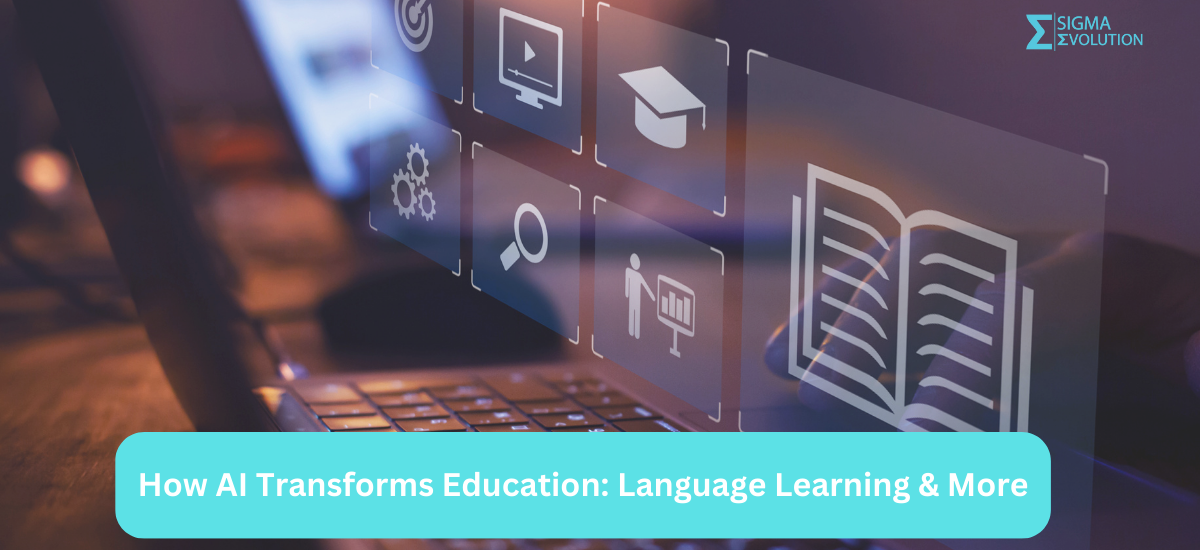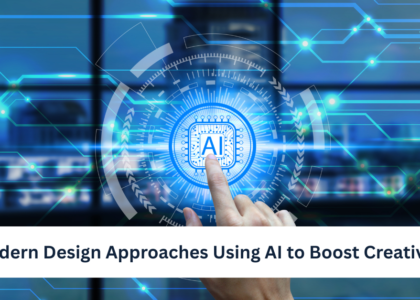Artificial Intelligence (AI) is revolutionizing the education sector by enhancing learning experiences, improving accessibility, and streamlining teaching methods. From personalized language learning to AI-powered virtual labs, this technology is transforming how students acquire knowledge and how educators deliver lessons.
The AI Revolution in Education – A New Era of Learning
AI-driven tools like automated grading systems, real-time translation, and interactive simulations are making education more engaging and efficient. However, despite its benefits, AI also presents challenges such as data privacy concerns and the risk of over-reliance. This blog explores the applications, advantages, and future possibilities of AI in education, shedding light on how it is shaping the learning landscape.
Artificial Intelligence represents a transformative force that changes many industrial sectors, including teaching. Student learning and teacher instruction receive significant transformation through AI-powered tools that span from language learning to complex scientific teaching operations. This research investigates two main areas of artificial intelligence application for languages and additional subjects while discussing possibilities and future limitations.

In This Blog, We will Explore
- IntroductionAI in Language Learning
- AI in Other Subjects
- Benefits of AI in Education
- Challenges and Ethical Considerations
- The Future of AI in Education
- Conclusion
1. Unlocking Boundless Opportunities
Through AI technology the process of learning languages has become easier while delivering customized education at higher speeds. Here are some key applications:
- Personalized Learning
Duolingo Babbel and Rosetta Stone implement adaptive algorithms that create personalized lesson structures according to individual learner progress. The programs assess student performance to modify the challenge level thus enabling targeted learning solutions.
- Real-Time Translation
Through the combination of Google and Deep Leverage technology which utilizes artificial intelligence users can instantly translate across different language pairs. This breaks down language barriers and facilitates global communication.
- Speech Recognition and Pronunciation
Through speech recognition technology inside language apps, users can improve their pronunciation through immediate correction systems. The AI system within Elsa Speak examines user speech patterns to supply automatic adjustments.
- Automated Grading
AI-based systems conduct evaluations of written and spoken assignments to deliver automatic feedback regarding grammar usage together with vocabulary and syntax. Such automation helps teachers reduce their workload while permitting students to study according to their learning.

2. Transforming Every Aspect of Education
AI technology extends beyond language learning because it improves multiple subject fields.
a. Mathematics
Students can receive detailed mathematical solutions through Photomath and Wolfram Alpha combined with step-by-step explanations of each step. Through online educational platforms, students develop better problem-solving abilities as they learn mathematical concepts.
b. Science
Artificial Intelligence delivers students the ability to perform experiments through virtual labs and simulated platforms. The interactive virtual laboratory software called Labster enables students to experience scientific environments that enhance both the accessibility and educational appeal of science education.
c. History and Social Studies
Artificial intelligence analyzes extensive historical data to discover relationships and statistical patterns in the information. The software tool ChatGPT produces summaries of historical events which simplifies complex subject matter for educational students.
d. Creative Arts
Running creative content has become a new area of application for artificial intelligence. Artistic design applications DALL-E and Canva utilize AI functionalities to support graphic design tasks and students can benefit from AI music composition tools to expand their creative abilities.
3.Benefits of AI in Education
- Personalization: AI adapts to individual learning styles and paces.
- Accessibility: AI tools make education more inclusive for students with disabilities.
- Efficiency: Automated grading and feedback save time for educators.
- Engagement: Interactive AI tools make learning more fun and immersive.
4. The Dark Side of AI in Learning
While AI offers numerous benefits, it also poses challenges:
- Data Privacy: AI systems collect vast amounts of user data, raising concerns about privacy and security.
- Bias: AI algorithms can perpetuate biases present in their training data.
- Over-Reliance: Excessive dependence on AI tools may hinder critical thinking and problem-solving skills.
FAQs About AI in Education:
Q. How is AI used in education?
AI is used for personalized learning, automated grading, real-time translation, virtual labs, and interactive study tools.
Q. How does AI help in language learning?
AI-powered apps like Duolingo and Babbel adapt lessons to learners’ progress, provide real-time translations, and improve pronunciation.
Q. What are the benefits of AI in education?
AI enhances personalization, accessibility, efficiency, and engagement in learning.
Q. Can AI replace teachers?
AI can assist teachers by automating tasks and enhancing learning experiences, but human guidance remains essential.
Q. What are the challenges of AI in education?
Challenges include data privacy concerns, potential algorithm biases, and the risk of over-reliance on AI tools.
Q. How does AI impact subjects other than language learning?
AI supports various subjects, including mathematics (step-by-step solutions), science (virtual labs), and creative arts (AI-generated content).
Q. What is the future of AI in education?
AI advancements will lead to smarter tutoring systems, immersive VR-based learning, and more adaptive educational experiences.
Q. Are AI-powered tools expensive for students?
Many AI tools offer free or affordable versions, making them accessible to a wide range of learners.
Q. Is AI safe for student use?
AI can be safe if used responsibly, but data privacy and ethical considerations should be addressed.
Q. How can teachers integrate AI into classrooms?
Teachers can use AI for grading, interactive lessons, personalized tutoring, and engaging students in creative learning activities.
5.The Future of AI in Education
The future of AI in education is promising. Advances in natural language processing (NLP) and machine learning will enable even more sophisticated tools. For example, AI tutors could provide 24/7 assistance, and virtual reality (VR) combined with AI could create fully immersive learning environments.







